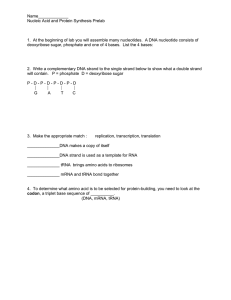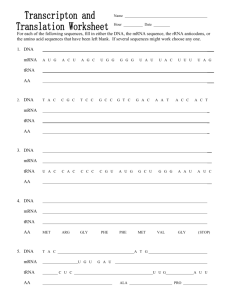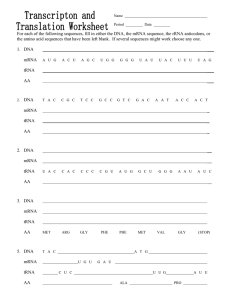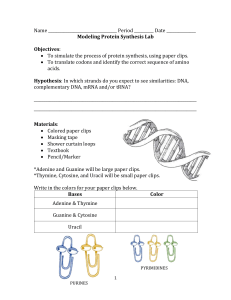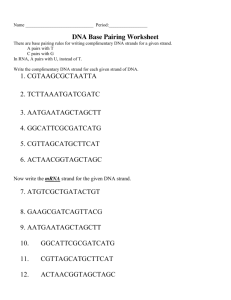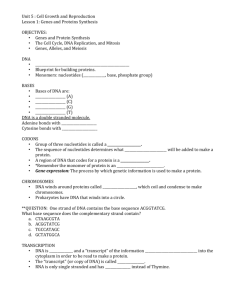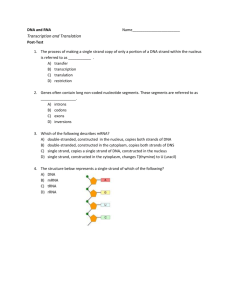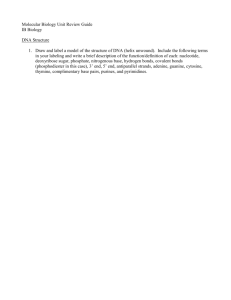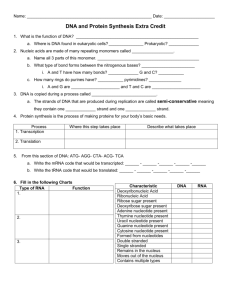Modeling Protein Synthesis Paperclip Lab
advertisement
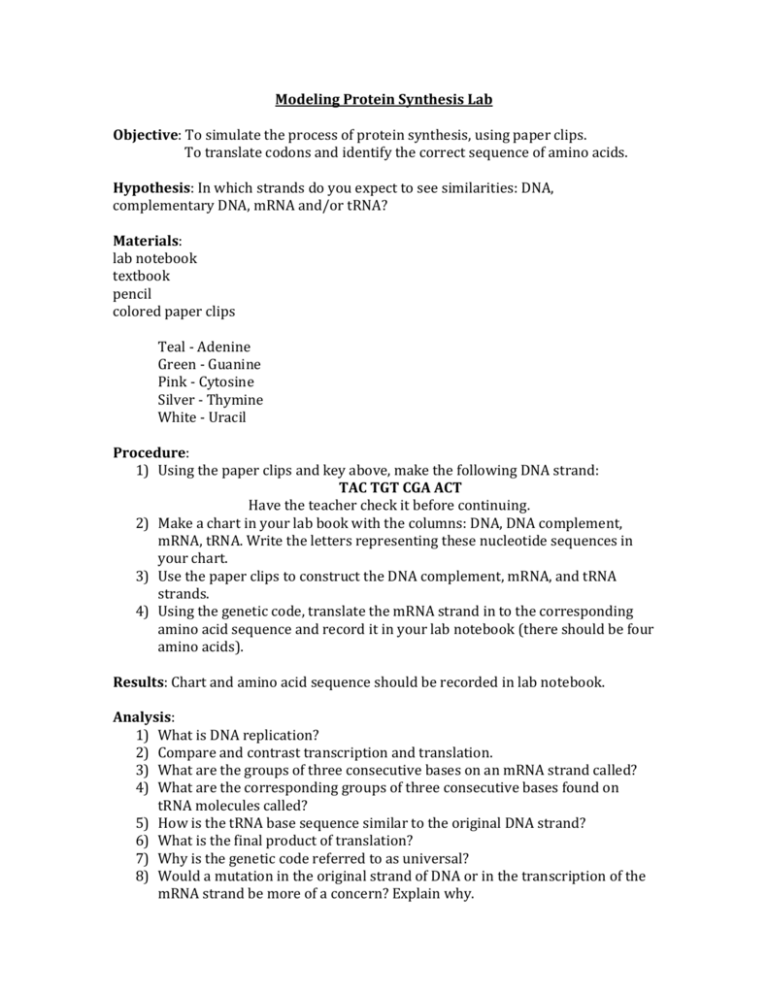
Modeling Protein Synthesis Lab Objective: To simulate the process of protein synthesis, using paper clips. To translate codons and identify the correct sequence of amino acids. Hypothesis: In which strands do you expect to see similarities: DNA, complementary DNA, mRNA and/or tRNA? Materials: lab notebook textbook pencil colored paper clips Teal - Adenine Green - Guanine Pink - Cytosine Silver - Thymine White - Uracil Procedure: 1) Using the paper clips and key above, make the following DNA strand: TAC TGT CGA ACT Have the teacher check it before continuing. 2) Make a chart in your lab book with the columns: DNA, DNA complement, mRNA, tRNA. Write the letters representing these nucleotide sequences in your chart. 3) Use the paper clips to construct the DNA complement, mRNA, and tRNA strands. 4) Using the genetic code, translate the mRNA strand in to the corresponding amino acid sequence and record it in your lab notebook (there should be four amino acids). Results: Chart and amino acid sequence should be recorded in lab notebook. Analysis: 1) What is DNA replication? 2) Compare and contrast transcription and translation. 3) What are the groups of three consecutive bases on an mRNA strand called? 4) What are the corresponding groups of three consecutive bases found on tRNA molecules called? 5) How is the tRNA base sequence similar to the original DNA strand? 6) What is the final product of translation? 7) Why is the genetic code referred to as universal? 8) Would a mutation in the original strand of DNA or in the transcription of the mRNA strand be more of a concern? Explain why.
